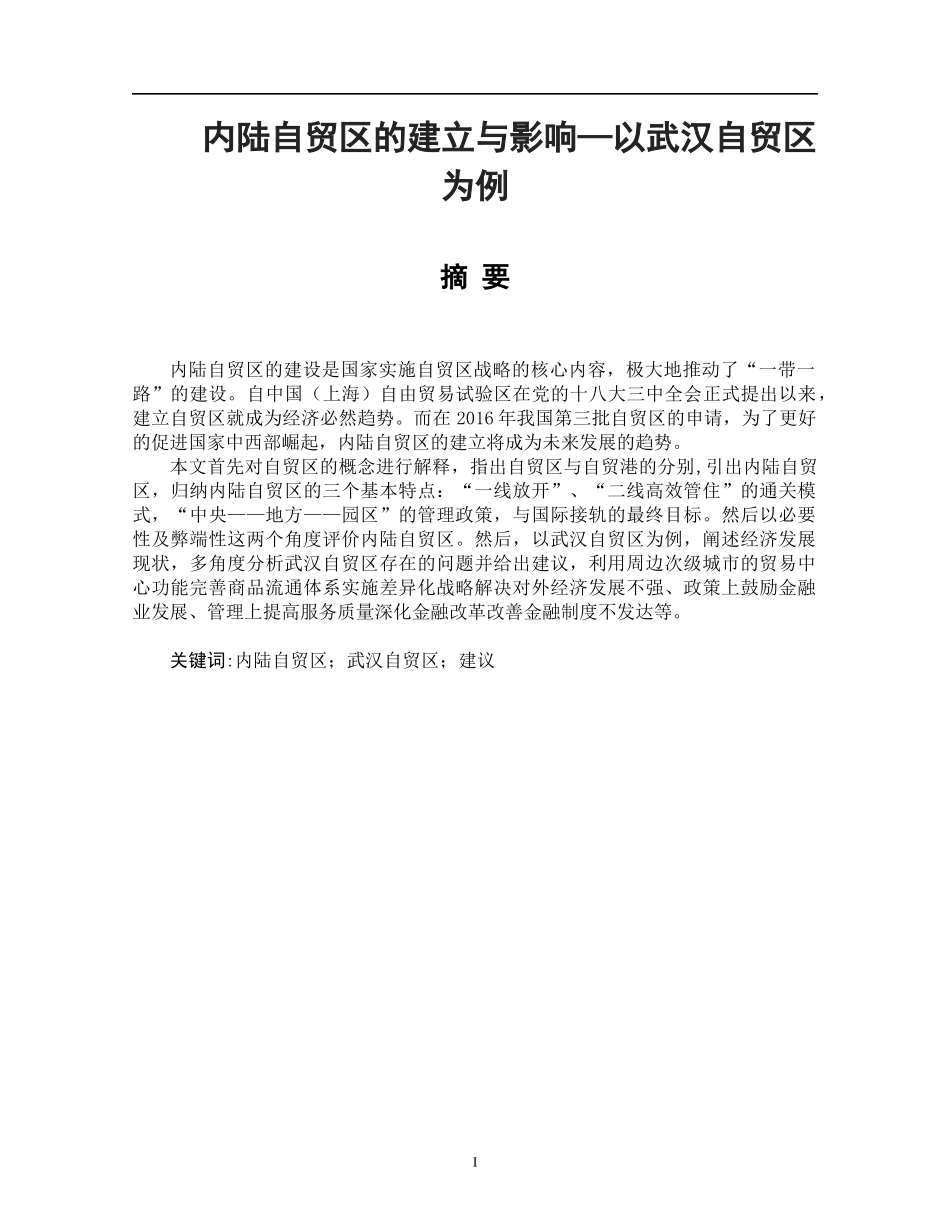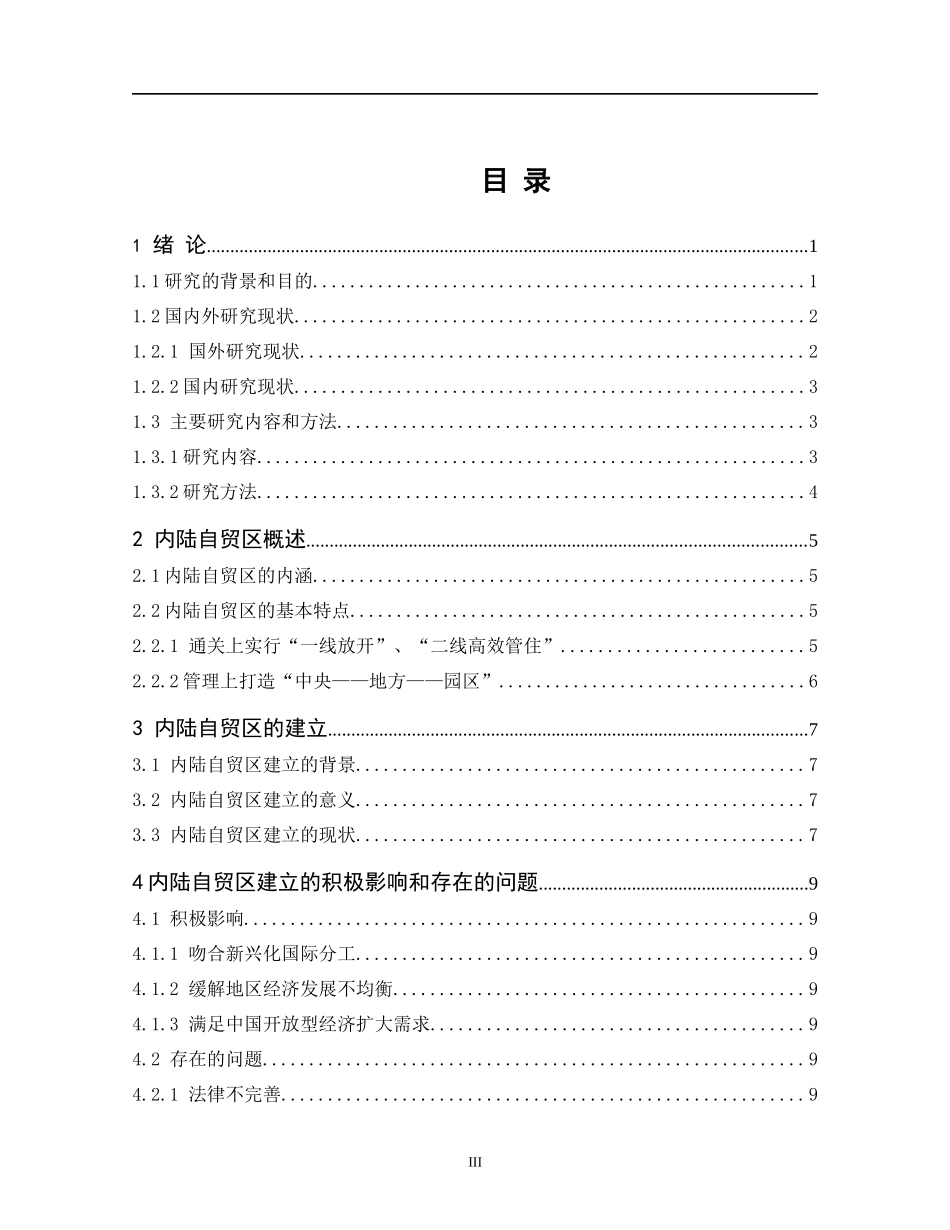内陆自贸区的建立与影响—以武汉自贸区为例摘 要内陆自贸区的建设是国家实施自贸区战略的核心内容,极大地推动了“一带一路”的建设。自中国(上海)自由贸易试验区在党的十八大三中全会正式提出以来,建立自贸区就成为经济必然趋势。而在 2016 年我国第三批自贸区的申请,为了更好的促进国家中西部崛起,内陆自贸区的建立将成为未来发展的趋势。本文首先对自贸区的概念进行解释,指出自贸区与自贸港的分别,引出内陆自贸区,归纳内陆自贸区的三个基本特点:“一线放开”、“二线高效管住”的通关模式,“中央——地方——园区”的管理政策,与国际接轨的最终目标。然后以必要性及弊端性这两个角度评价内陆自贸区。然后,以武汉自贸区为例,阐述经济发展现状,多角度分析武汉自贸区存在的问题并给出建议,利用周边次级城市的贸易中心功能完善商品流通体系实施差异化战略解决对外经济发展不强、政策上鼓励金融业发展、管理上提高服务质量深化金融改革改善金融制度不发达等。关键词:内陆自贸区;武汉自贸区;建议IResearch on the Establishment and Influence of the Inland Free Trade Zone-For Example of Wuhan Free-Trade ZoneABSTRACTThe construction of the inland free trade area is the core content of the national implementation of the FTA strategy, which greatly promoted the construction of "The Belt and Road". Since the China (Shanghai) free trade pilot area in the party's Eighth Plenary Session since the formal presentation of the establishment of free trade area has become an inevitable trend of the economy.This paper first explains the concept of FTA, points out the differences between the free trade area and the self-service port, and draws out the three basic characteristics of the inland free trade area: "first-line release", "second-line efficient Management "of the customs clearance model," central - local - park "management policy, with the international goal of the final goal. And then to the necessity and disadvantages of these two angles evaluation of inland FTA. Then, taking Wu...


